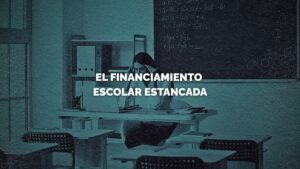Source: NC Health News
New reports have found that teacher vacancy rates have increased by more than 50% in schools across the state. One of the hardest categories hit by vacancies is elementary school special education teachers, with 444.25, according to The News & Observer.
This report comes as advocates are calling for the Republican-led legislature to take action in making investments toward special education teachers.
Although the shortage of special education teachers isn’t new, the need couldn’t be any more urgent.
“In times when we see less of a shortage of other teachers, we’ve always had more difficulty to keep special ed positions fully staffed,” stated Kara Hume, a former special ed teacher and current education professor at the University of North Carolina to N.C. Health News. “It’s worse now than it has been, but it has never been great.”
According to N.C. Health News, one problem increasing the ever-growing gap is that special ed teachers often report that they don’t feel supported by their school’s administration. Teachers have noted the lack of professional development resources, and the administrative paperwork burdens they have to deal with for each student are too high.
Special education teachers frequently take on additional responsibilities outside their work, including coordinating with therapists and other health care providers and advocating for their students to be included in basic school activities, like music and art class, according to N.C. Health News.
The addition of responsibilities, lack of support, resources and funding all attribute to the profession having higher rates of burnout and turnover than other teaching specialties.
“We are failing to support our students with disabilities,” Taylor Cordes, a former Wake County Public School System high school, told WRAL. “And I mean, if you look at the data, their graduation rates are much lower, they’re much lower their discipline. And like suspension rates are much higher.”
Investments towards special education classes, resources, and educators are a big part of the state’s longest-running education funding case, known as Leandro vs. State of NC. The state Supreme Court has ruled several times that North Carolina has failed to guarantee every child with a sound, basic education in accordance with the state’s Constitution.
Over the years, the investment gap between the state’s wealthiest district and lowest-funded districts is ever-growing, and with state Republicans’ refusal to adequately fund public schools, the gap is even greater.
“One of the groups of children that are disproportionately impacted by low school funding are children with disabilities,” explained Crystal Grant, a law professor at Duke and the director of the school’s Children’s Law Clinic to N.C. Health News. “Congress has never fully funded the [Individuals with Disabilities Education Act], so those issues have been long-standing. And I think things like the pandemic and the teacher shortage just make that worse — and then if you are dealing with an under-resourced school district, that’s another strike.”
According to WRAL, researchers hired by state agencies and lawmakers have urged the North Carolina General Assembly to change how it funds services for students with IEPs for decades. In 2021, the Leandro lawsuit pushed forth a plan to boost spending per student with a disability to 2.3 times the cost of educating the average North Carolina student — the same recommendation made when the lawsuit was first filed in 1994.
However, due to little movement by state Republicans in part to consider implementing the full funding of Leandro, North Carolina remains one of six states that has placed a cap on funding for students with disabilities.




